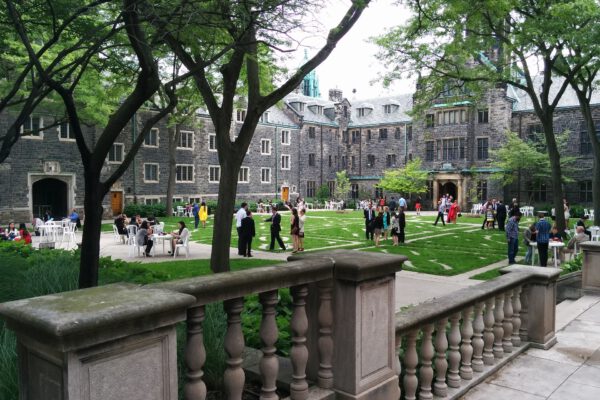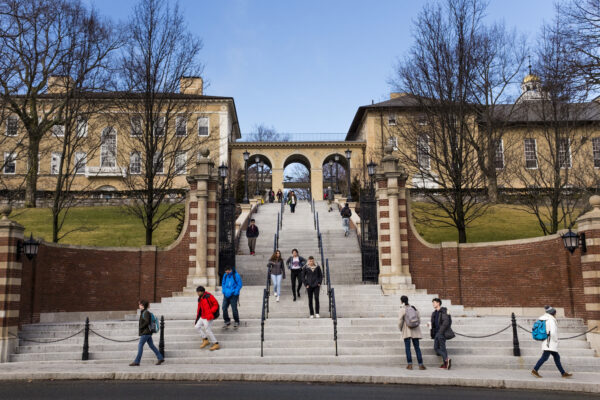By Susan Elrod and Judith A. Ramaley
Higher education institutions have faced upheaval as they have found ways to respond to the urgent and rapidly changing situation surrounding the COVID-19 pandemic. It is clear that this pandemic will require us to make changes that we may have never thought possible or only talked about as ideal. Leaders need to significantly speed up their response to these disruptions—as well as to those that were already taking place before this pandemic—such as changing student demographics, new virtual learning technologies and modes, and continuing pressure to demonstrate our value to an increasingly skeptical public. It is a matter of institutional survival for many, and all of us face increasing uncertainties. In fact, we may never reach a “new normal,” but be in a continual state of responding to the unexpected.
In response to the crisis, many of us have also begun working together in new ways, unlocking a new capacity for collaboration and innovation that we did not know we had. As we traverse the terrain of this crisis, it is time to think about how to retain a sense of common purpose and shared responsibility, building upon our shared principles and values to guide decision-making.
We are already in the “new abnormal.” We do not know what lies ahead, but we can reasonably assume it won’t look like the “old normal.” Many questions lie before us. What can we learn from our experience? How can we infuse shared governance with a new sense of shared purpose? How can we maintain this new spirit of collaboration? What will it mean to be a leader in this changed world? How will leading, following, and collaborating be different?
While we don’t have answers to these questions yet, we do know that our experiences can shape new future possibilities when we pay enough attention. New forms of institutional and cross-sector leadership will be needed as we work with our communities to respond to and recover from the social, economic, and environmental dislocations that will face us in the aftermath of COVID-19. One such way of working is through a shared leadership approach—an approach that appears to be emerging spontaneously or through emergency operations structures as we respond in this moment of crisis. It is one we must retain as we go forward in order to continue to be nimble, adaptable, and responsive to an even more rapidly changing world.
Much has been written about the nature and practice of shared leadership as a way to tackle complex challenges and ask questions that matter, drawing on a range of experience to understand and effectively respond to the questions. At its core, shared leadership is based on the knowledge and experience of many rather than on the position or authority of a few. The role of leader can change depending upon the question or problem to be addressed, and individuals can be leaders in some situations and followers in others.
In a shared leadership approach, multiple perspectives are drawn upon, and collaboration is an essential feature as it fosters the development of ways to plan, implement, and even celebrate working across traditional organizational lines and boundaries. As Kezar and Holcombe (2017, 3) point out:
Shared leadership also recognizes the importance of leaders in positions of authority, but focuses on how those in positions of power can delegate authority, capitalize on expertise within the organization, and create infrastructure so that organizations can capitalize on the leadership of multiple people. Leadership is a process—not an individual—and can be supported by professional development, access to information, team-based work, and incentives.
Any effort to create a culture of shared leadership and collaboration will clearly be a work in progress, especially if this is a new idea or approach, and especially when campus leaders are working remotely. The way forward requires a great deal from each of the participants, but it takes someone to lead it to make it happen. This can be a formal leader with a title or someone of influence or experience related to the particular challenge to be addressed.
We have an opportunity to seize the moment we are in. A new approach will further allow us to avoid relaxing back into our old ways as our situation evolves. Here’s how:
Be a model: Model shared leadership with behaviors and ways of exploring questions that others can learn from, including the capacity to be honest about what you know, don’t know, and need to know; be transparent with processes and decisions; and be truly open to engaging others in collaboration.
Work together: Demonstrate that working together matters and is connected to solving problems in meaningful ways. This involves setting the tone, establishing the charge, and then listening and acting upon what teams recommend.
Cross-campus teams: Support cross-campus collaboration and draw people together who would not normally sit at the same table to work on a mutually important problem. Constantly ask, “Who else needs to be at the table to help us solve this problem?” Then invite them, listen to them, and empower them to be part of the solution.
Be patient: Understand that this approach takes time, but make a commitment to the long haul by building the relationships that form the fabric of this approach. This means breaking down silos, sometimes having difficult conversations about what is and isn’t working, and acknowledging who is benefiting and who is not.
Acknowledge accomplishments: Celebrate shared accomplishments—doing so is especially important in times of crisis. Recognize the contributions of teams and individuals.
Be open to experimentation: Allow team members to experiment with different ways of working through a shared leadership approach. Whether the approach succeeds or not, use it as an opportunity to learn and make improvements to the process and outcomes.
Our future is a shared one, so let’s take a shared leadership approach to get there. After all, we are in this together.
Reference
Kezar, Adrianna J., and Elizabeth M. Holcombe. 2017. Shared Leadership in Higher Education: Important Lessons from Research and Practice. Washington, DC: American Council on Education.
If you have any questions or comments about this blog post, please contact us.


